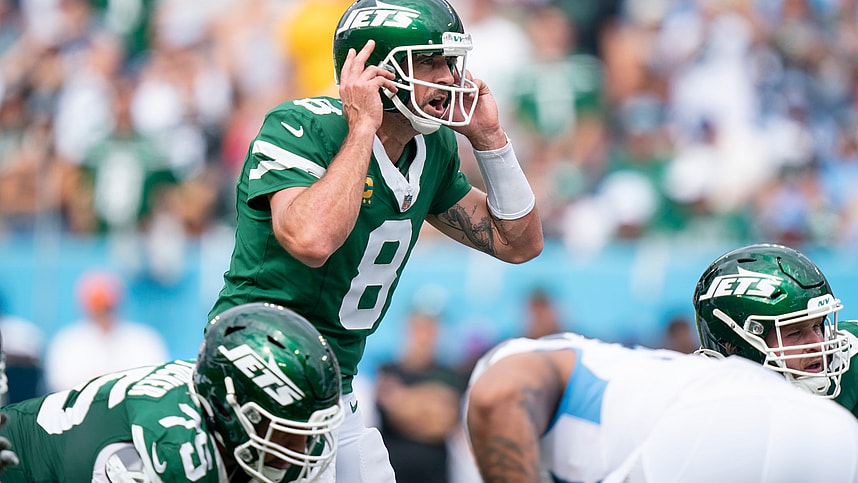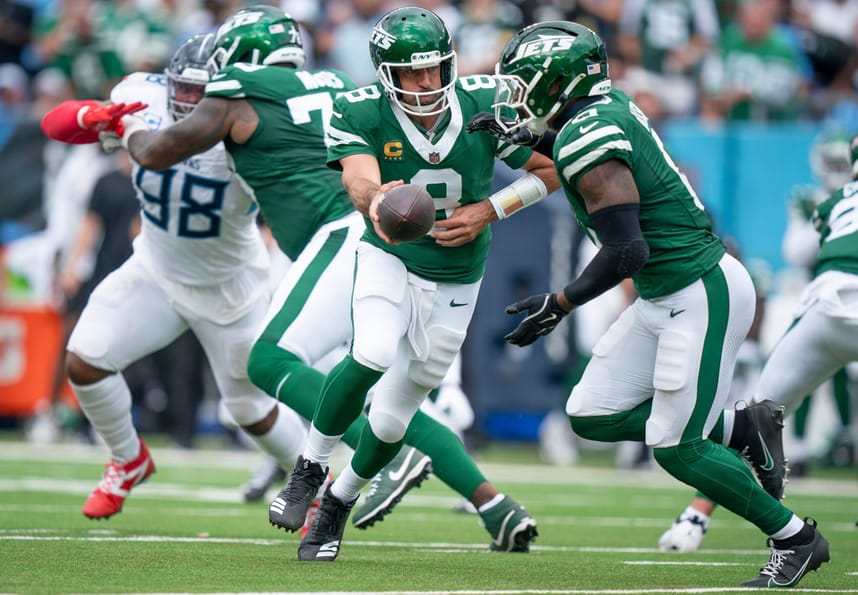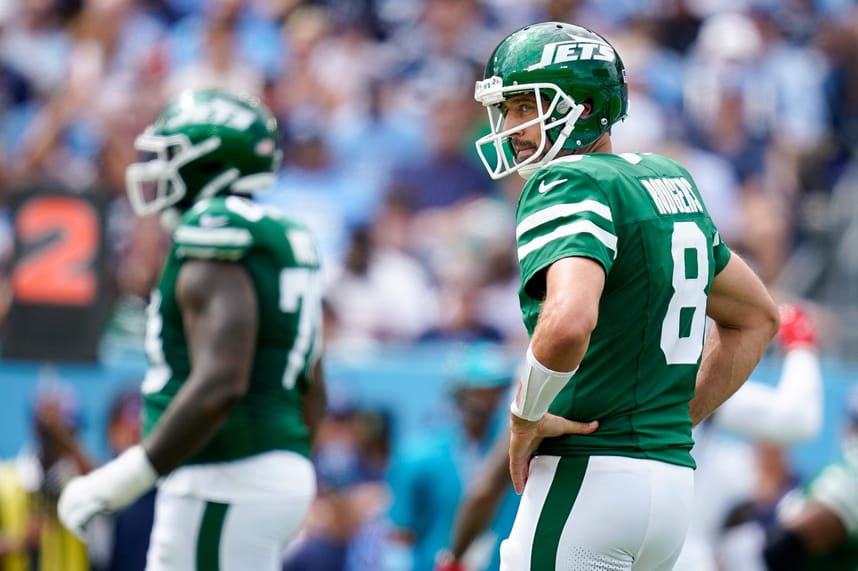
Whenever the New York Jets play, all eyes are on Number 8. After decades of quarterback ineptitude, there’s finally a glimmer of hope that rests on the right arm of the future Hall of Famer. As Aaron Rodgers shakes off the rust after missing nearly the entire 2023 season with a devastating Achilles tear, his performance will be under the microscope even more every week.
The Jets took down the Titans 24-17 in Week 2. While Rodgers’ numbers from the game don’t leap off the page, let’s take a closer look to see how he faired in Week 2.
The stat line doesn’t tell the whole story

On face value, a line of 18/30 for 176 yards, two touchdowns, zero interceptions, and two sacks doesn’t look much different than a Zach Wilson performance from last season, except for maybe the touchdowns. Just like in Week 1 when Rodgers was held to under 200 yards, there’s more than meets the eye here.
In Week 1, Rodgers was Pro Football Focus’s fifth highest-graded QB, despite the low yardage total. In Week 2, PFF also ranked him as the fifth highest-graded QB although his overall grade dropped from 86.2 to 67.2.
In the first quarter, the Jets’ offense looked lifeless, primarily looking to the running game to provide a spark. This left Rodgers in 3rd and long situations where the Titans’ ferocious pass rush led by the underrated Harold Landry and a formidable group of interior defensive linemen make life hell for the offensive line. The Jets struggled to find a rhythm.
However, in the second quarter, the Jets made adjustments that they didn’t make consistently in Week 1 and let Rodgers work via the short passing game on early downs. He heated up as the quarter went on, firing balls into tight windows with perfect placement and exceptional velocity.
Throughout the game, Rodgers showed for the most part that while he’s not as quick as he once was, he has elite awareness and enough mobility to move around the pocket and extend plays. Yes, on one of his two sacks, he did appear a bit flat-footed and almost as if he were stuck in quicksand as he was taken down from behind, but overall he displayed sufficient mobility to evade a talented pass rush like Tennessee’s.
Rodgers made some big-time throws

While most of his production came from the quick game, he did uncork a few throws that only a few QBs in the league can make. Chief among these throws was the beautiful 26-yard TD pass he threw to running back Breece Hall to open up the action in the third quarter, showing a touch that few QBs have to put it right there for Hall to reel in (also a beautiful route by Hall).
Some of his incompletions were still impressive throws. The early game sideline laser to Garrett Wilson, which was deflected up and into the sideline, was still an impressive read on very tight coverage, and he came just a few inches away from connecting on a beautiful deep ball to wide receiver Allen Lazard later on in the action.
Seeing the zip, timing, and anticipation on his throws throughout the day shows that he’s still got the juice in his arm and mobility in his legs to match up with his nearly unmatched cerebral processing of the game. These are all very good signs for the Green and White faithful.
- Jets’ superstar corner praised for elite covderage in Week 1 against DK Metcalf
- Jets’ head coach has high expectations for critical defensive back
- Jets could reunite with free-agent quarterback for depth
There were some head-scratching plays from Rodgers

While it was a mostly positive performance, two odd things stick out. First, on the opening drive of the game, Rodgers was called for an intentional grounding penalty while under moderate pressure. At first watch, there did seem to be escape routes out of the pocket that he could have taken, but he seemed concerned with avoiding a hit at all costs, leading to the drive-breaking penalty.
Repeated decisions like this where he seems to be overly cautious to avoid taking a shot will be something to keep an eye on as the season progresses. Penalties like what the Jets incurred yesterday aren’t great, but plays like that commonly end up as turnovers, which is much worse.
The second and most confounding part of the game was the several times the Jets faced the expiration of the play clock. They had to burn several timeouts and took at least one delay of game penalty throughout the day. It was bizarre. It’s unclear if the issue was a technical one getting the play call in, or if it is more on Rodgers or Jets’ offensive coordinator Nathaniel Hackett for the repeated miscues.
We were complementary of Hackett for how he adapted his play calling yesterday, and one would think that a veteran like Rodgers would be able to overcome minor issues and not find himself needing to be bailed out by timeouts from the coaching staff. Fortunately, it didn’t matter, but wasting timeouts in a tight game can be very costly. It will be interesting to see what else comes out of the situation for the Jets going forward.
While this certainly wasn’t a vintage Rodgers performance, he showed enough physical talent to feel optimistic about his prospects as the season progresses while playing within the structure of the Jets’ offense to lead the team to victory. At this point in his career, that is about all one can expect.
More about: New York Jets